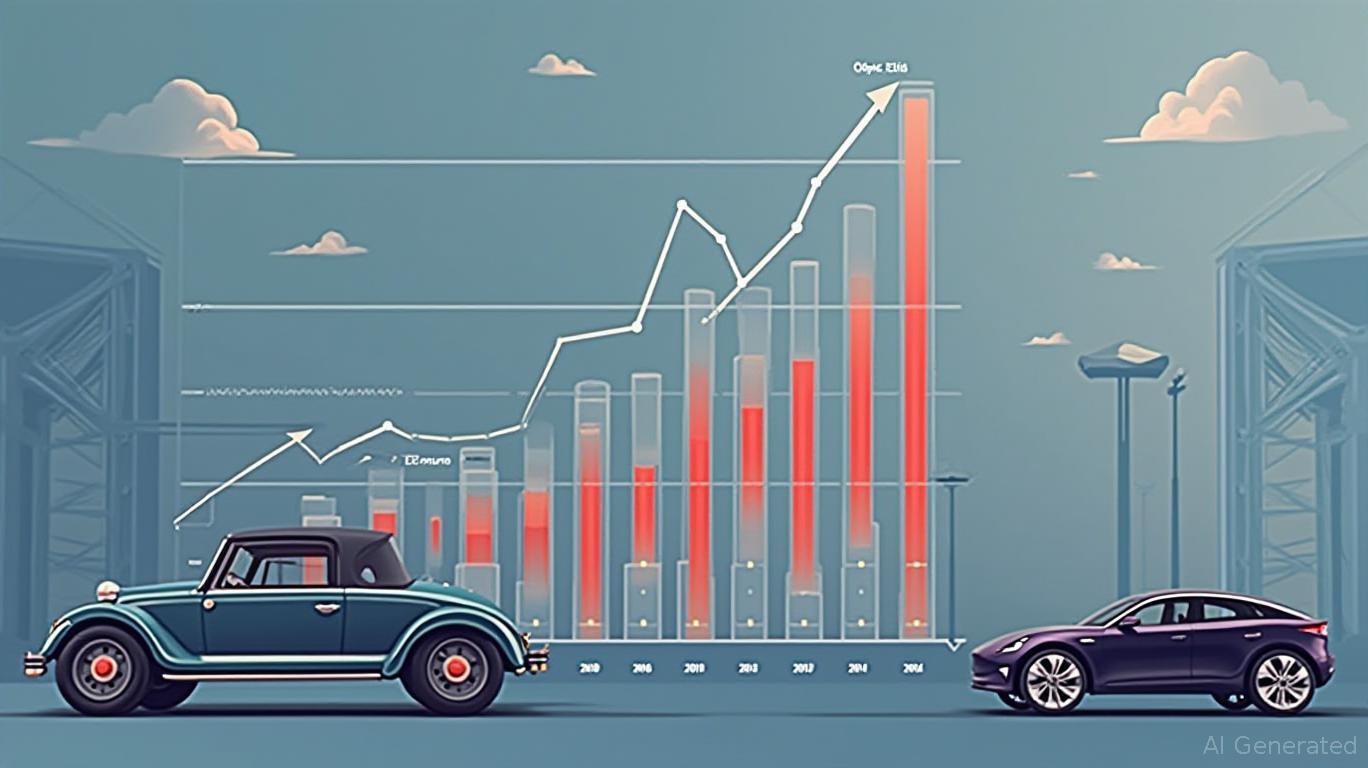Stealth Price Hikes and Tariff Tensions: Navigating the Auto Sector's New Reality

The U.S. auto industry is at a crossroads. Since April 2025, President Trump's 25% tariffs on imported vehicles and parts have reshaped pricing strategies, supply chains, and investor calculus. While automakers have delayed direct price hikes to avoid consumer backlash, the era of “stealth” cost absorption is nearing its end. For investors, this creates stark risks and opportunities in a sector increasingly divided between tariff-sensitive laggards and those mastering domestic production or electrification.
The Stealth Hike Playbook: A Fragile Shield
Automakers are masking tariff costs through reduced incentives, inflated dealer fees, and delayed price adjustments. For instance,
slashed its average cash-back offers for the Civic by $1,500 in Q2 2025, while Hyundai quietly added “destination fees” to its Sonata's sticker price. These tactics have kept advertised prices stable—for now.But this strategy is unsustainable. reveal the strain: Subaru's net margins have dropped from 6% to 3% since Q1 2025, as its tariff-exposed imports (e.g., the Outback) absorb $4,000+ levies per vehicle. Meanwhile, Toyota's U.S.-assembled Camry Hybrid, facing only $2,000 in tariffs, retains healthier margins.
Margin Compression vs. Consumer Backlash: A Double-Edged Sword
The tariff-driven cost squeeze is bifurcating the sector:
- High Import Exposure: Automakers like Subaru (SUBC), Hyundai (HYMTF), and luxury brands (e.g., Mercedes-Benz) face margin erosion as tariffs eat into profits. Their vehicles—often assembled in Asia or Europe—bear tariffs of $10,000+ (e.g., the Mercedes G-Wagon).
- Domestic Champions: Ford (F) and GM (GM), with U.S. assembly lines for models like the Explorer and Suburban, see tariffs reduced by 40%–60% post-April adjustments. Their ability to source parts locally mitigates costs.
The risk? If automakers can't pass tariffs to consumers without triggering a sales slump, they'll face a lose-lose scenario: stagnant margins or market share loss. Early signs are worrying: shows Tesla (TSLA) outperforming peers, as its U.S.-centric production and EV focus shield it from tariff volatility.
Investment Implications: Short the Vulnerable, Long the Agile
- Short Positions:
- Subaru (SUBC): Reliant on Japanese imports, its U.S. sales could crater if it raises prices or margins collapse further.
- Luxury Imports (e.g., MBGYY, BMWYY): Their high-end models face tariffs exceeding $15,000, making them vulnerable to both U.S. consumer sticker shock and EU retaliation on their U.S. exports.
EV Laggards: Traditional automakers like Fiat Chrysler (FCAU) lack EV scale and U.S. manufacturing depth to offset tariff costs.
Long Positions:
- Ford (F) and GM (GM): Their U.S. production networks and compliance with USMCA rules position them to capture market share from tariff-weakened rivals.
- EV Leaders: Tesla (TSLA) and Rivian (RIVN) benefit from federal EV tax credits and domestic battery supply chains, insulating them from import costs.
- Supply Chain Transformers: Honda (HMC) and Toyota (TM) are expanding U.S. factories to meet USMCA content rules, reducing their tariff exposure over time.
The 2026 Crossroads: USMCA and Retaliation Risks
The next critical test comes in 2026, when the USMCA's rules of origin undergo a review. Automakers failing to meet 75% North American content thresholds—especially those relying on Asian or European parts—will face renewed tariff pressure. Simultaneously, retaliatory tariffs from the EU and Canada could disrupt U.S. auto exports, hitting companies like Ford's European division.
Final Call: Exploit the Divide
The tariff-driven reshaping of the auto sector is irreversible. Investors should avoid automakers trapped in costly import loops and bet on firms leveraging domestic production or EV innovation. The era of stealth hikes is nearing an end—when prices finally rise openly, the market will reward the prepared.
Action Items:
- Short: SUBC, MBGYY, HYMTF
- Long: F, GM, TSLA, RIVN
- Watch: HMC, TM (for supply chain pivots)
The road ahead is clear: tariffs are the new catalyst for auto industry Darwinism. Adapt or be sidelined.

Comments
No comments yet